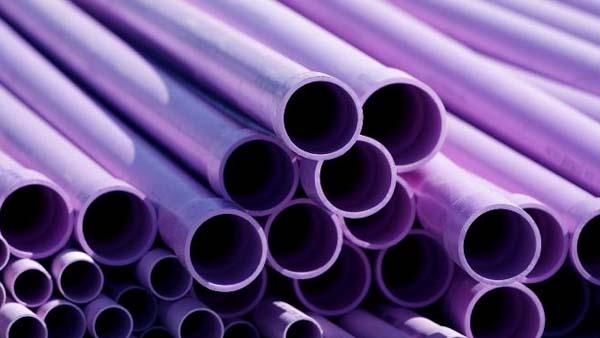Recent research indicates that there might be more to reclaimed water than meets the eye, or nose, in this case.
 One of the greatest concerns with using so-called dirty water has been the contaminants it contains and how to ensure they do not persist in the soil profile over time.
One of the greatest concerns with using so-called dirty water has been the contaminants it contains and how to ensure they do not persist in the soil profile over time.Besides recycling a precious resource, there might be other benefits to using reclaimed water, according to recent research out of the University of Florida. That research suggests that recycled water not only contains impurities that often must be flushed through the soil to prevent problems such as compaction and hydrophobicity, but also contains essential nutrients like nitrogen and phosphorous.
Reclaimed water is defined as wastewater that has gone through at least secondary treatment.
"The main difference between (reclaimed water) that has received secondary treatment versus advanced treatment is the reduced level of nutrients and other chemicals remaining in water subjected to advanced treatment," wrote Jinghua Fan and George Hochmuth, who authored the study. "Water receiving advanced treatment typically has 25 percent of the nitrogen and phosphorus and less soluble salts than contained in secondary treatments. Increasingly, the reclaimed water used for irrigation is from advanced wastewater treatment facilities."
Among the benefits of using reclaimed water containing nitrogen, the researchers learned, is that it could potentially result in reduced nitrogen fertilizer inputs. To date, there is little research on the subject.
"It is important to determine the optimum combinations of water and nutrient applications to support turfgrass production without impairing groundwater through losses of nutrients from the landscape," they wrote in their study published on the electronic journal HortTechnology.
A University of Florida research team designed greenhouse experiments using Empire zoysiagrass, which is suitable for use on fairways from the Pacific Northwest, through the lower portion of the Midwest and into the Mid-Atlantic regions as well as all points south. The study also included St. Augustine grass, which is used in residential lawns throughout the Gulf Coast and Florida.
Treatments included irrigation with tap water (control), reclaimed water from a university wastewater treatment facility, irrigation with reclaimed water with additional nitrogen supplied from ammonium nitrate and a dry prilled fertilizer treatment.
Based on visual turf quality and clipping yield, the study showed that turfgrass growth responded positively to nitrogen concentration in the irrigation water, but not to the same degree it did to the synthetic fertilizer treatment. The concentration of nitrogen in the non-amended wastewater was not sufficient for optimal turfgrass growth. Measurements showed no difference in turfgrass growth with the base level nitrogen in the delivered reclaimed water compared with tap water. The data showed that as more N was added to the base recycled water, turfgrass growth increased.
Turf quality and clipping yield maximized when the total nitrogen concentration in the irrigation water was at least 5 mg per liter. Leaching of nitrogen was determined to be negligible with all treatments.
The authors of the study ultimately concluded more research is needed, particularly outdoor field studies, to reinforce their findings.

